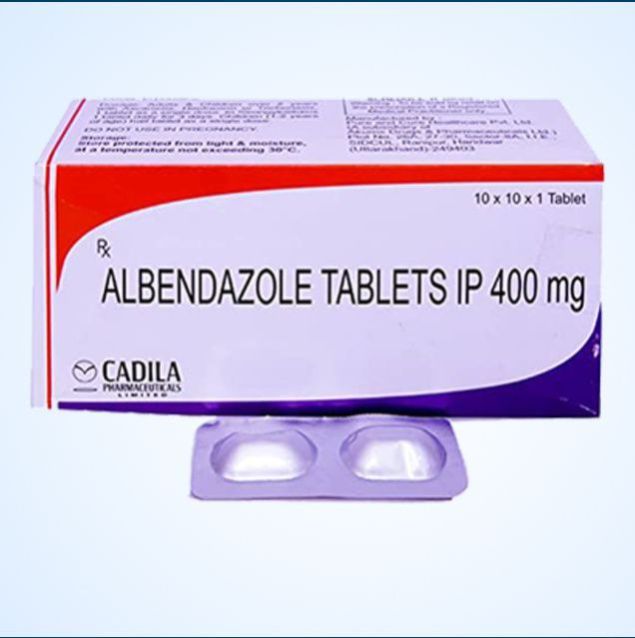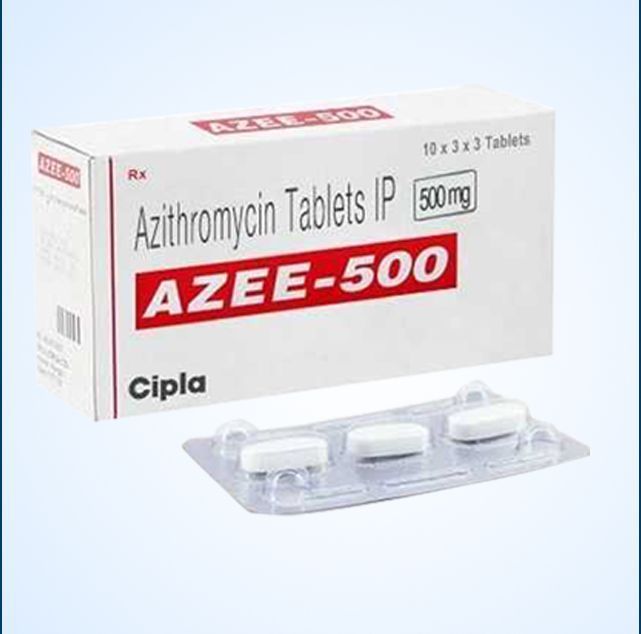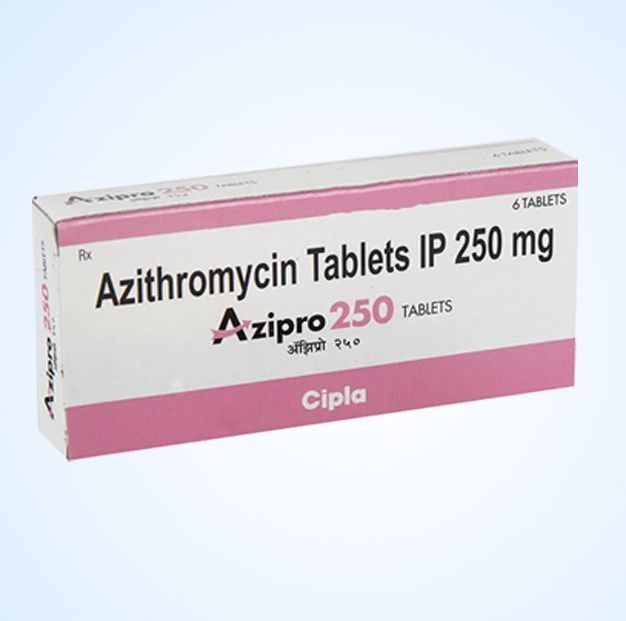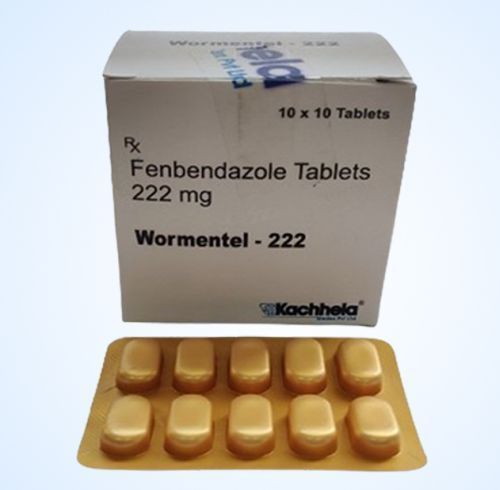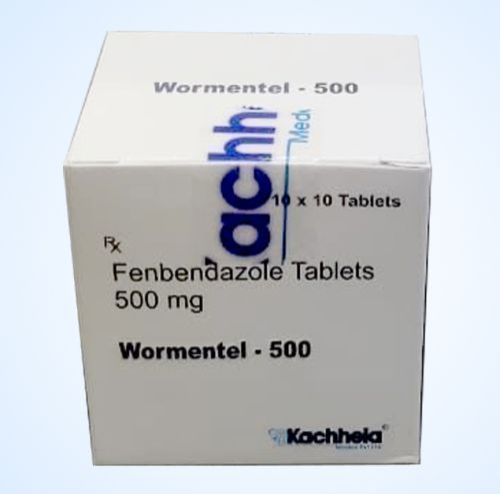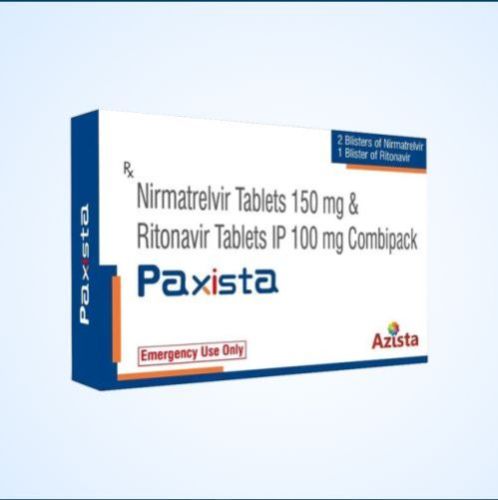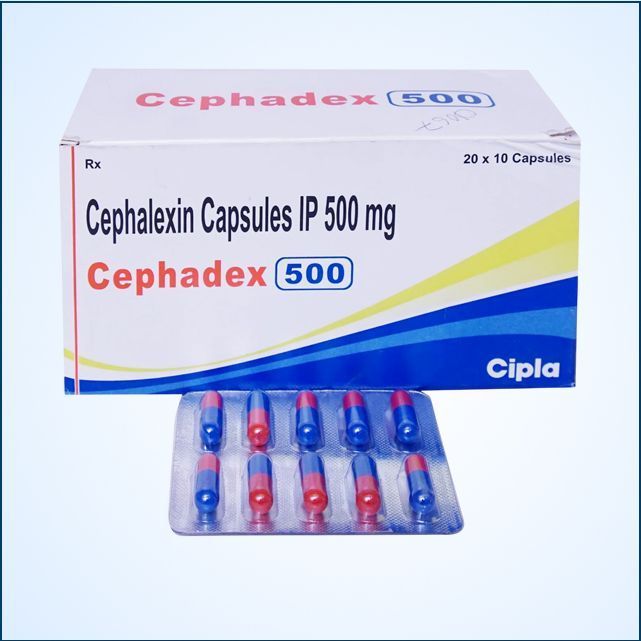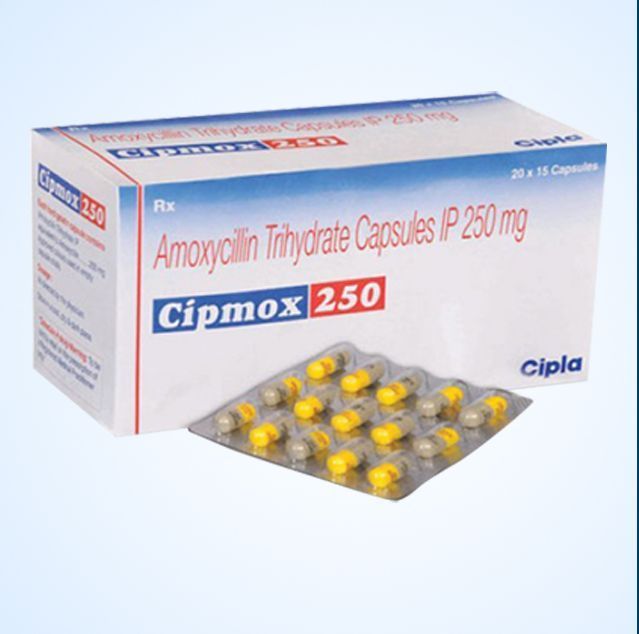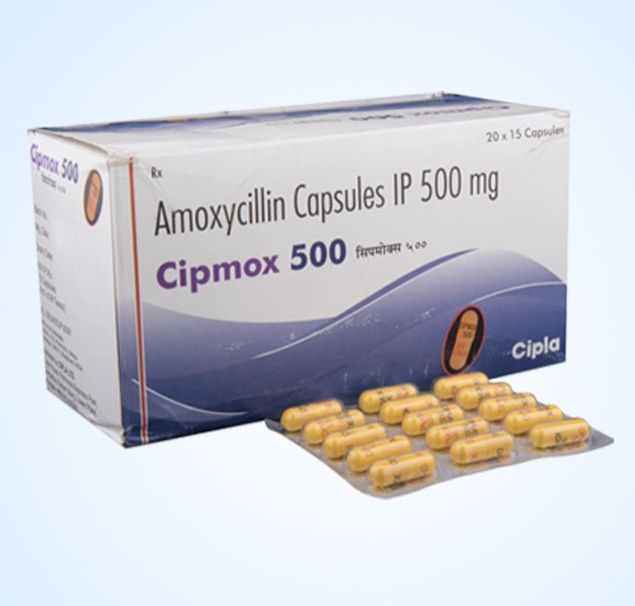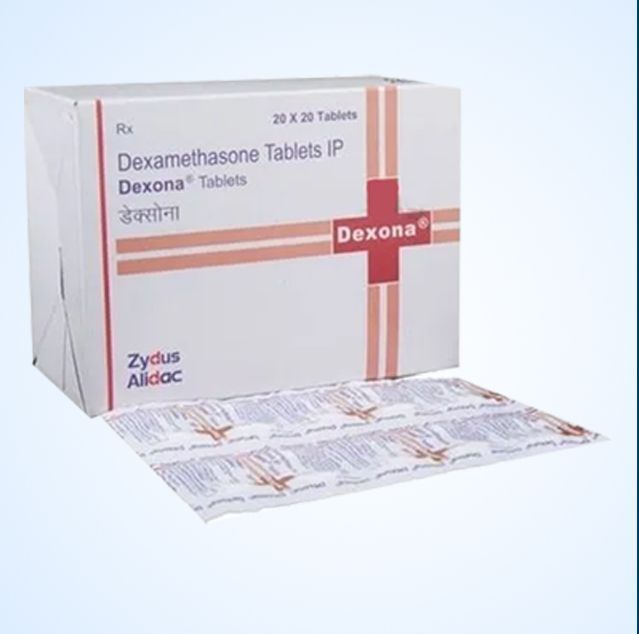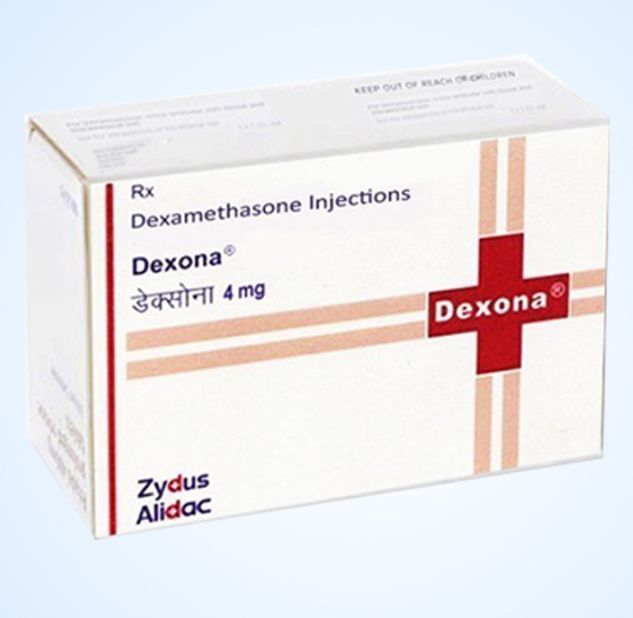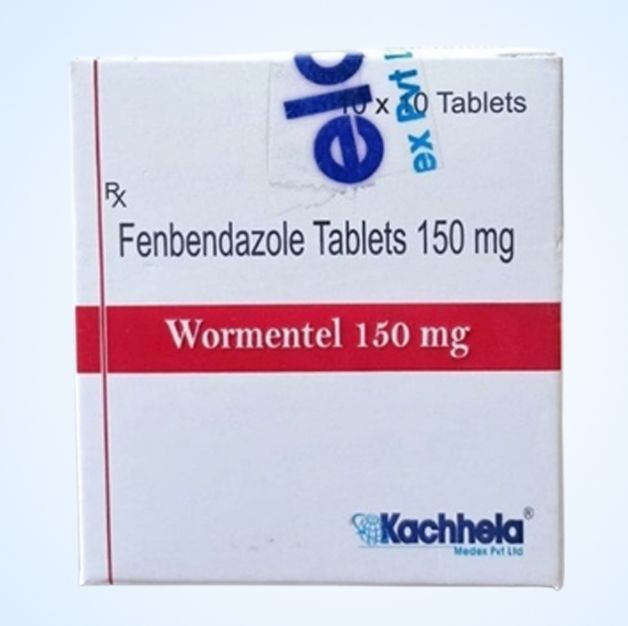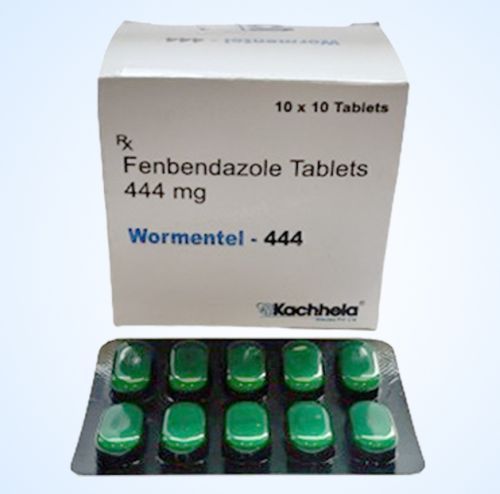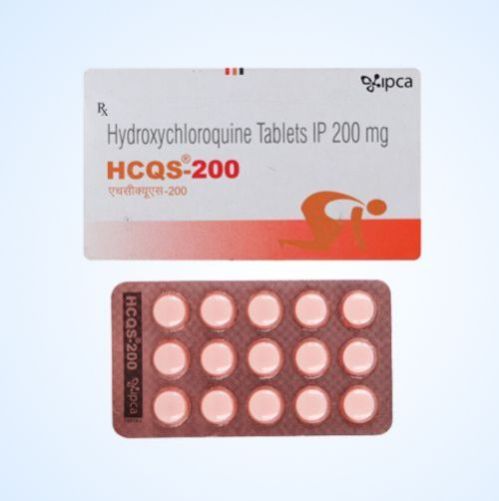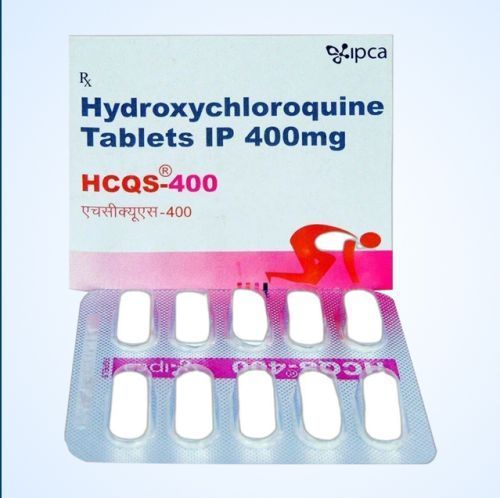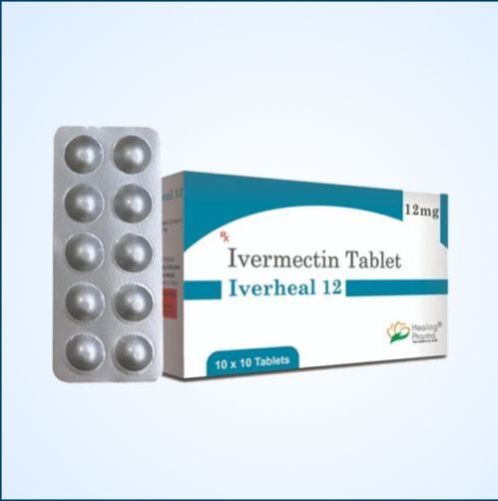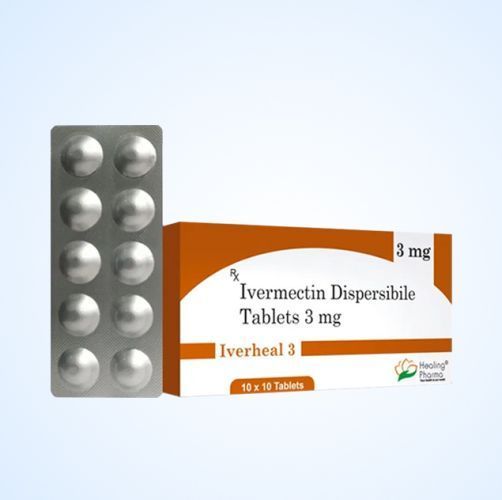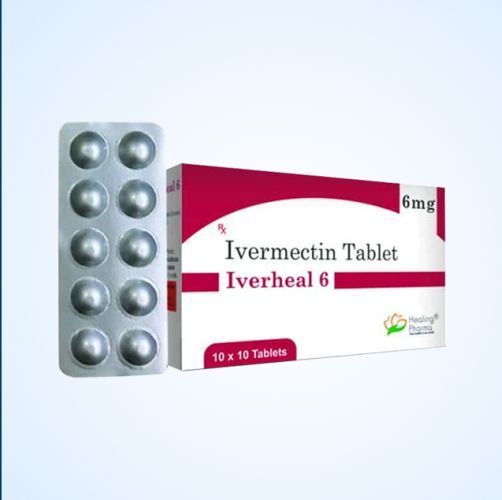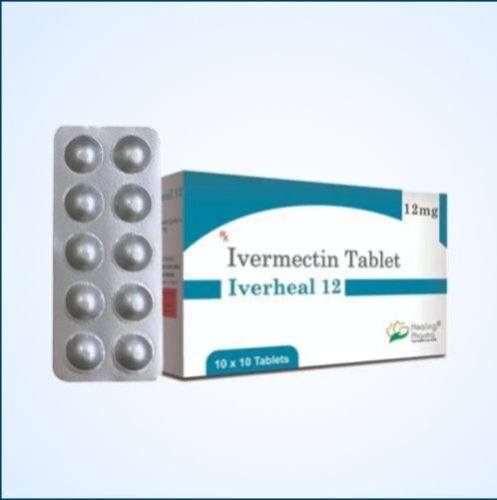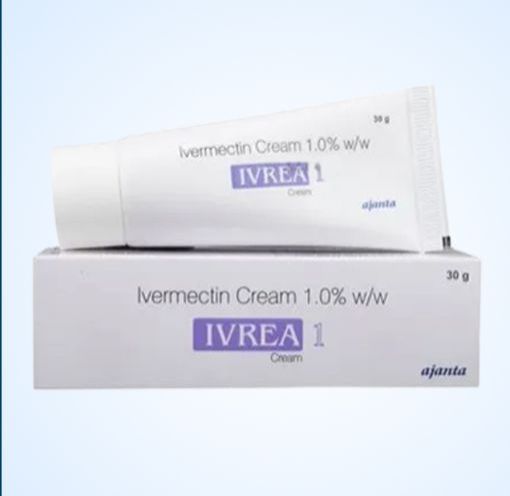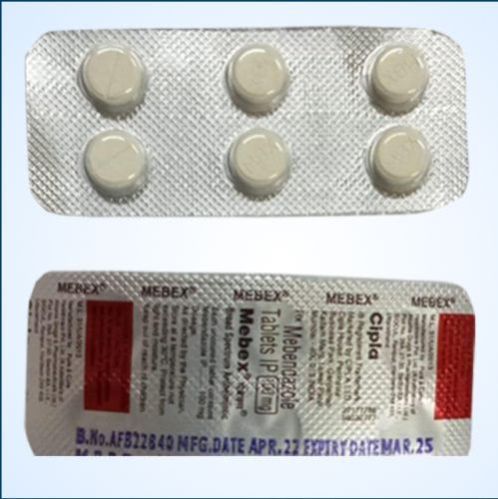- Utran, Surat, Gujarat
- View Mobile Number
Covid Medicines
Leading Exporters and Trader of Albendazole 400 mg Tablets, Azee 250 Mg Tablets, Azee 500 Mg Tablets, Azipro 250 Mg, Buy Fenbendazole 222 Mg, Buy Fenbendazole 500 Mg, Buy Paxista 150 Mg, Cephadex 500 Mg, Cipmox 250 Mg, Cipmox 500 Mg, Dexona 0.5 Mg, dexona 4 mg tablets, Fenbendazole 150 Mg, Fenbendazole 444 Mg Tablets, HCQS 200 Mg, HCQS 400 Mg, Ivermectin 12 Mg Online USA, UK, Ivermectin 3 Mg Best Price, Ivermectin 6 Mg Online Low Price, Ivermectin Tablet, Ivrea 1 Mg Cream USA & UK and Mebendazole 100 Mg from Surat.
| Business Type | Exporter, Trader |
| Brand Name | Cadila |
| Color | Silver |
| Form | Tablets |
| Application | Clinical |
| Grade | Medicine Grade |
| Packaging Type | Strip |
| Packaging Size | 10X10 |
| Medicine Type | Pharmaceutical |
| Type | Albendazole Tablets |
| Country of Origin | India |
| Business Type | Exporter, Trader |
| Composition | Azithromycin |
| Brand Name | Cipla |
| Form | Tablet |
| Packaging Type | Strips |
| Shelf Life | 12 Months |
| Country of Origin | Made In India |
| Storage | Dry Place |
| Type Of Medicines | Allopathic |
| Medicine Type | 10X6 |
| Usage | Clinical |
Azee 250 Mg is a commonly prescribed antibiotic used to treat a wide range of bacterial infections. Containing azithromycin as its active ingredient, Azee 250 Mg belongs to the macrolide class of antibiotics. It works by stopping bacterial growth, which helps in quick recovery from infections. Doctors recommend Azee 250 Mg for respiratory tract infections, throat infections, skin infections, and ear infections.
What is Azee 250 Mg?Azee 250 Mg is a reliable antibiotic that fights bacterial infections effectively. It is often used when patients require a lower dosage compared to Azee 500 Mg. With its proven results, Azee 250 Mg is prescribed for both adults and children under medical supervision.
Uses of Azee 250 MgDoctors prescribe Azee 250 Mg for:
-
Respiratory infections such as bronchitis and pneumonia.
-
Ear, nose, and throat infections including sinusitis and tonsillitis.
-
Skin and soft tissue infections.
-
Certain sexually transmitted infections.
-
Typhoid fever (in specific cases).
By eliminating bacteria, Azee 250 Mg helps prevent complications and ensures faster recovery.
Dosage and AdministrationThe dosage of Azee 250 Mg depends on the patient’s age, body weight, and severity of infection. It is usually prescribed once daily, which makes it more convenient than many other antibiotics. Azee 250 Mg should be taken with a glass of water, with or without food. It is important to complete the prescribed course of Azee 250 Mg even if symptoms improve early.
Benefits of Azee 250 Mg-
Effective against a broad range of bacterial infections.
-
Convenient once-daily dosing.
-
Suitable for both adults and children.
-
Provides quick relief from symptoms.
-
Shorter treatment duration compared to other antibiotics.
Patients taking Azee 250 Mg often start noticing improvements within two to three days of treatment.
Side Effects of Azee 250 MgLike most antibiotics, Azee 250 Mg may cause some side effects. Common ones include nausea, vomiting, diarrhea, stomach discomfort, and headache. Rarely, Azee 250 Mg may cause allergic reactions, liver issues, or irregular heartbeat. Consult a doctor immediately if any serious side effects occur.
Precautions for Azee 250 Mg-
Take Azee 250 Mg only under a doctor’s supervision.
-
Patients with liver or kidney problems should inform their doctor before starting Azee 250 Mg.
-
Avoid alcohol while taking Azee 250 Mg.
-
Do not skip doses or stop early without completing the treatment course.
-
Store Azee 250 Mg tablets in a cool, dry place away from direct sunlight.
Q1: What is Azee 250 Mg used for?
Azee 250 Mg is used for treating bacterial infections of the respiratory tract, ear, skin, throat, and some sexually transmitted diseases.
Q2: How should I take Azee 250 Mg?
Take Azee 250 Mg once daily with water, with or without food, as prescribed by your doctor.
Q3: Is Azee 250 Mg safe for children?
Yes, Azee 250 Mg can be prescribed for children, but the dosage will be adjusted according to body weight.
Q4: Can I stop Azee 250 Mg when I feel better?
No, you should complete the full course of Azee 250 Mg to avoid recurrence of infection and antibiotic resistance.
Q5: Do I need a prescription for Azee 250 Mg?
Yes, Azee 250 Mg is a prescription medicine and should only be taken under medical advice.
| Business Type | Exporter, Trader |
| Storage | Dry Place |
| Country of Origin | Made In India |
| Composition | Azithromycin |
| Shelf Life | 12 Months |
| Packaging Size | 10X3X3 |
| Packaging Type | Strips |
| Form | Tablet |
| Brand Name | Cipla |
| Usage | Clinical |
| Type Of Medicines | Allopathic |
Azee 500 Mg is a widely prescribed antibiotic used for the treatment of bacterial infections. Containing azithromycin as its active ingredient, Azee 500 Mg belongs to the macrolide group of antibiotics. It works by stopping the growth of harmful bacteria, ensuring faster recovery. Doctors commonly recommend Azee 500 Mg for respiratory infections, throat infections, skin infections, and certain sexually transmitted diseases.
What is Azee 500 Mg?Azee 500 Mg is a trusted antibiotic that provides relief from bacterial infections by targeting bacteria directly. Unlike many other antibiotics, Azee 500 Mg is often given in a shorter treatment course, making it more convenient for patients. It is available in tablet form and is well-tolerated by most individuals.
Uses of Azee 500 MgDoctors prescribe Azee 500 Mg for the following conditions:
-
Respiratory infections such as pneumonia and bronchitis.
-
Ear, nose, and throat infections including tonsillitis and sinusitis.
-
Skin and soft tissue infections.
-
Certain sexually transmitted infections.
-
Typhoid fever (in specific cases).
With its broad-spectrum activity, Azee 500 Mg helps treat infections efficiently and prevents complications.
Dosage and AdministrationThe dosage of Azee 500 Mg depends on the type and severity of the infection. It is usually prescribed once daily, making it more convenient compared to other antibiotics that require multiple doses. Doctors recommend taking Azee 500 Mg with water, with or without food. Completing the full prescribed course of Azee 500 Mg is important to prevent recurrence and resistance.
Benefits of Azee 500 Mg-
Broad-spectrum antibiotic effective against various bacterial infections.
-
Convenient once-daily dosage.
-
Shorter treatment course compared to many antibiotics.
-
Safe and well-tolerated when used as prescribed.
-
Provides quick symptom relief.
Patients using Azee 500 Mg often report improvement within 2–3 days of starting treatment.
Side Effects of Azee 500 MgLike other antibiotics, Azee 500 Mg may cause side effects in some patients. Common side effects include nausea, vomiting, diarrhea, stomach pain, and headache. Rarely, Azee 500 Mg may cause liver issues or allergic reactions such as rash or swelling. Seek medical attention if any serious side effects occur.
Precautions for Azee 500 Mg-
Use Azee 500 Mg only under a doctor’s supervision.
-
Patients with liver or kidney problems should inform their doctor before starting Azee 500 Mg.
-
Avoid alcohol while taking Azee 500 Mg.
-
Do not skip doses or stop early without completing the full course.
-
Store Azee 500 Mg tablets in a cool, dry place away from sunlight.
Q1: What is Azee 500 Mg used for?
Azee 500 Mg is used to treat bacterial infections of the respiratory tract, skin, ENT, and sexually transmitted infections.
Q2: How should I take Azee 500 Mg?
Take Azee 500 Mg once daily with water as directed by your doctor, with or without food.
Q3: Is Azee 500 Mg safe for children?
Yes, Azee 500 Mg can be prescribed for children, but the dosage must be adjusted according to body weight.
Q4: Can I stop taking Azee 500 Mg once I feel better?
No, you should complete the full course of Azee 500 Mg to prevent relapse and antibiotic resistance.
Q5: Do I need a prescription for Azee 500 Mg?
Yes, Azee 500 Mg is a prescription antibiotic and should only be used under medical advice.
| Business Type | Exporter, Trader |
| Brand Name | Cipla |
| Composition | Azithromycin |
| Packaging Size | 6 Tablets |
| Packaging Type | Strips |
| Shelf Life | 12 Months |
| Country of Origin | Made In India |
| Application | Clinical |
| Type Of Medicines | Allopathic |
| Form | Tablets |
| Storage | Dry Place |
Azipro 250 Mg is a widely prescribed antibiotic medicine used to treat bacterial infections effectively. Containing azithromycin as its active ingredient, Azipro 250 Mg belongs to the macrolide group of antibiotics. It works by stopping bacterial growth, which helps the body fight infections and recover faster. Doctors often recommend Azipro 250 Mg for respiratory infections, ear infections, throat infections, skin conditions, and sexually transmitted infections.
What is Azipro 250 Mg?Azipro 250 Mg is an oral antibiotic that treats a variety of bacterial infections. It is commonly prescribed for patients who require a lower strength than Azipro 500 Mg. Because of its broad-spectrum action, Azipro 250 Mg is trusted by doctors for both adults and children. It is easy to take, usually once daily, which increases patient compliance.
Uses of Azipro 250 MgDoctors prescribe Azipro 250 Mg for several bacterial infections, including:
-
Respiratory tract infections like pneumonia and bronchitis.
-
Ear, nose, and throat infections such as sinusitis and tonsillitis.
-
Skin and soft tissue infections.
-
Certain sexually transmitted diseases.
-
Typhoid fever (in specific cases).
With its reliable action, Azipro 250 Mg helps control infections and prevents complications.
Dosage and AdministrationThe dosage of Azipro 250 Mg depends on the type and severity of infection, as well as the patient’s age and weight. Usually, Azipro 250 Mg is prescribed once daily with a glass of water. It can be taken with or without food. To ensure effectiveness, patients must complete the full prescribed course of Azipro 250 Mg, even if symptoms improve early.
Benefits of Azipro 250 Mg-
Broad-spectrum antibiotic effective against many bacterial infections.
-
Convenient once-daily dosing.
-
Suitable for both adults and children under medical supervision.
-
Provides quick relief from infection-related symptoms.
-
Shorter treatment course compared to many other antibiotics.
Many patients report noticeable improvement within 2–3 days of starting Azipro 250 Mg.
Side Effects of Azipro 250 MgLike all medicines, Azipro 250 Mg may cause side effects in some individuals. Common side effects include nausea, diarrhea, vomiting, abdominal pain, and headache. Rarely, Azipro 250 Mg may cause liver problems, allergic reactions, or irregular heartbeat. If any severe reaction occurs, seek medical help immediately.
Precautions for Azipro 250 Mg-
Take Azipro 250 Mg only under a doctor’s guidance.
-
Patients with liver or kidney problems should inform their doctor before using Azipro 250 Mg.
-
Avoid alcohol while taking this medicine.
-
Do not skip doses or discontinue early, as it may lead to antibiotic resistance.
-
Store Azipro 250 Mg tablets in a cool, dry place away from sunlight.
Q1: What is Azipro 250 Mg used for?
Azipro 250 Mg is used to treat bacterial infections of the respiratory tract, ear, throat, skin, and some sexually transmitted infections.
Q2: How should I take Azipro 250 Mg?
Take Azipro 250 Mg once daily with water, either with or without food, as prescribed by your doctor.
Q3: Is Azipro 250 Mg safe for children?
Yes, doctors may prescribe Azipro 250 Mg for children, with dosage adjusted according to body weight.
Q4: Can I stop Azipro 250 Mg when I feel better?
No, always complete the prescribed course of Azipro 250 Mg to prevent recurrence of infection and resistance.
Q5: Do I need a prescription for Azipro 250 Mg?
Yes, Azipro 250 Mg is a prescription-only antibiotic and should not be taken without medical advice.
| Business Type | Exporter, Trader |
| Brand Name | Wormentel |
| Dosage Form | 222 Mg |
| Country of Origin | Made In India |
| Form | Tablets,Tablets |
| Usage | Covid |
| Type Of Medicines | Allopathic |
| Shelf Life | 12 Months |
| Storage | Dry Place,Cool and Dry Place |
| One Strips contains | 10 Tablets |
When pet owners and livestock keepers search for effective deworming solutions, one of the top options is to buy Fenbendazole 222 Mg. This trusted antiparasitic treatment helps control and eliminate intestinal worms, ensuring better health and well-being for animals. Veterinarians frequently recommend pet owners to buy Fenbendazole 222 Mg for dogs, cats, and even livestock, thanks to its proven effectiveness against a wide range of parasites.
What is Fenbendazole 222 Mg?Before deciding to buy Fenbendazole 222 Mg, it is important to understand how it works. Fenbendazole 222 Mg belongs to the benzimidazole class of anthelmintics. It targets the energy metabolism of parasites, disrupting their life cycle and removing them safely from the body. Those who buy Fenbendazole 222 Mg can expect reliable treatment against roundworms, whipworms, hookworms, and certain tapeworms.
Why Buy Fenbendazole 222 Mg?Pet owners and farmers often buy Fenbendazole 222 Mg because:
-
It treats a broad spectrum of internal parasites.
-
It comes in an easy-to-administer tablet form.
-
It improves animal health, immunity, and overall vitality.
-
It can be used in both therapeutic and preventive deworming programs.
Choosing to buy Fenbendazole 222 Mg ensures pets and livestock remain protected from harmful infections that affect growth and quality of life.
Dosage and AdministrationIf you plan to buy Fenbendazole 222 Mg, always follow veterinary dosage instructions. The correct amount depends on body weight, species, and type of infection. Generally, Fenbendazole 222 Mg tablets are administered orally for a prescribed number of days. Completing the full course is essential when you buy Fenbendazole 222 Mg to achieve maximum effectiveness.
Safety and Side EffectsWhen pet owners buy Fenbendazole 222 Mg and use it correctly, side effects are rare. However, some animals may experience mild digestive issues such as nausea, diarrhea, or temporary appetite loss. Serious reactions are uncommon. To use Fenbendazole safely, always consult a veterinarian before deciding to buy Fenbendazole 222 Mg.
Precautions Before You Buy Fenbendazole 222 Mg-
Do not exceed recommended dosage.
-
Pregnant or lactating animals should only use it under veterinary guidance.
-
Store Fenbendazole in a cool, dry place.
-
Always complete the full course after you buy Fenbendazole 222 Mg.
Q1: Where can I buy Fenbendazole 222 Mg?
You can buy Fenbendazole 222 Mg from veterinary pharmacies, online pet health stores, or directly through licensed veterinarians.
Q2: Is it safe to buy Fenbendazole 222 Mg for dogs and cats?
Yes, many pet owners buy Fenbendazole 222 Mg for dogs and cats, but proper dosage guidance from a vet is essential.
Q3: Can livestock owners buy Fenbendazole 222 Mg?
Absolutely, farmers often buy Fenbendazole 222 Mg for cattle, goats, sheep, and horses to manage parasite infestations.
Q4: How often should I buy Fenbendazole 222 Mg for my pet?
The frequency depends on whether you are using it for treatment or preventive deworming. A vet will guide you on when to buy Fenbendazole 222 Mg again.
Q5: Do I need a prescription to buy Fenbendazole 222 Mg?
In some regions, you can directly buy Fenbendazole 222 Mg, while in others, a prescription is required. Always follow local regulations.
| Business Type | Exporter, Trader |
| Brand Name | Kachhela |
| Form | Tablets |
| Packaging Type | Paper Box |
| Packaging Size | 10x10 |
| Shelf Life | 12 Months |
| Composition | Fenbendazole 444 Mg |
| Country of Origin | Made In India |
| Application | Covid |
| Type Of Medicines | Allopathic |
| Storage | Dry Place |
Fenbendazole 500 Mg is a trusted antiparasitic medication widely prescribed in veterinary medicine for the treatment of intestinal worms and parasitic infections. Pet owners and livestock farmers often rely on Fenbendazole 500 Mg to keep their animals healthy, strong, and free from dangerous parasites. Because of its broad-spectrum effectiveness, Fenbendazole 500 Mg is a leading choice for both treatment and prevention of worm infestations.
What is Fenbendazole 500 Mg?Fenbendazole 500 Mg belongs to the benzimidazole family of anthelmintics, a class of medicines that work by disrupting the parasites’ ability to absorb energy. This process weakens the worms and eliminates them from the body. Veterinarians recommend Fenbendazole 500 Mg for dogs, cats, cattle, sheep, goats, and horses. The easy-to-administer tablet form of Fenbendazole 500 Mg makes it convenient for routine use.
Uses of Fenbendazole 500 MgThe main uses of Fenbendazole 500 Mg include:
-
Treatment of gastrointestinal roundworms.
-
Control of whipworm and hookworm infestations.
-
Elimination of some species of tapeworms.
-
Preventive deworming in both pets and livestock.
-
Support in improving animal growth, immunity, and overall vitality.
By using Fenbendazole 500 Mg regularly under veterinary guidance, owners can help prevent serious health issues caused by internal parasites.
Dosage and AdministrationThe dosage of Fenbendazole 500 Mg varies depending on the animal’s size, species, and infection type. Typically, Fenbendazole 500 Mg tablets are administered orally, either as a single dose or over several days. Completing the full treatment course of Fenbendazole 500 Mg is essential to achieve effective parasite control. Veterinary supervision ensures proper dosage and safe results.
Benefits of Fenbendazole 500 Mg-
Broad-spectrum action against multiple parasites.
-
Safe and effective across different animal species.
-
Convenient oral administration.
-
Helps improve animal health, growth, and performance.
-
Supports preventive parasite management programs.
When given correctly, Fenbendazole 500 Mg not only treats active infections but also reduces the risk of reinfestation.
Safety and Side Effects of Fenbendazole 500 MgMost animals tolerate Fenbendazole 500 Mg very well. In some cases, mild digestive symptoms such as nausea, vomiting, diarrhea, or reduced appetite may occur. Serious side effects are rare. Responsible use of Fenbendazole 500 Mg under veterinary guidance minimizes risks and ensures safe treatment outcomes.
Precautions When Using Fenbendazole 500 Mg-
Do not exceed the prescribed dosage of Fenbendazole 500 Mg.
-
Pregnant or lactating animals should only receive Fenbendazole 500 Mg with veterinary approval.
-
Store the tablets in a cool, dry place away from sunlight.
-
Always consult a veterinarian before starting treatment.
Q1: What is Fenbendazole 500 Mg used for?
Fenbendazole 500 Mg is used to treat gastrointestinal parasites including roundworms, hookworms, whipworms, and some tapeworms in animals.
Q2: Is Fenbendazole 500 Mg safe for dogs and cats?
Yes, veterinarians often prescribe Fenbendazole 500 Mg for dogs and cats, provided the correct dosage is followed.
Q3: Can livestock take Fenbendazole 500 Mg?
Absolutely, Fenbendazole 500 Mg is widely used in farm animals like cattle, sheep, goats, and horses for parasite control.
Q4: How often should I give Fenbendazole 500 Mg to my pet?
The frequency of Fenbendazole 500 Mg depends on whether it is for treatment of active infections or preventive deworming. Always follow veterinary advice.
Q5: Do I need a prescription for Fenbendazole 500 Mg?
In many regions, a veterinary prescription is required to obtain Fenbendazole 500 Mg, though availability may vary depending on local regulations.
| Business Type | Exporter, Trader |
| Brand Name | Azista |
| Form | Tablets |
| Country of Origin | Made In India |
| Usage | Clinical |
| Packaging Type | Strips |
| Type Of Medicines | Allopathic |
| Composition | Nirmatrelvir Tablets 150 mg & Ritonavir Tablets Ip 100 mg |
| Storage | Dry Place |
| Medicine Type | Paxista 150 mg Tablets |
When patients search for effective treatment options for viral infections, one of the common choices is to buy Paxista 150 Mg. This antiviral medicine is widely recognized for its role in treating certain viral conditions under strict medical supervision. Doctors often advise patients to buy Paxista 150 Mg as part of a prescribed combination therapy for better effectiveness and long-term results.
What is Paxista 150 Mg?Before deciding to buy Paxista 150 Mg, it is important to understand what it is. Paxista 150 Mg is an antiviral medication designed to inhibit viral replication in the body. By slowing down the virus’s ability to multiply, buy Paxista 150 Mg helps patients control the infection and improve recovery outcomes.
Why Buy Paxista 150 Mg?There are several reasons why patients and caregivers choose to buy Paxista 150 Mg:
-
Proven effectiveness against targeted viral infections.
-
Helps reduce viral load in the body.
-
Used under medical guidance for safe treatment.
-
Available in convenient oral tablet form.
When you buy Paxista 150 Mg, you are accessing a trusted option often recommended as part of combination antiviral therapies.
Dosage and AdministrationIf you plan to buy Paxista 150 Mg, always follow the exact prescription provided by your doctor. The typical dosage is based on the patient’s medical condition, age, and response to treatment. Buy Paxista 150 Mg in tablet form and take it orally with water. Do not alter the dosage or stop taking it without professional advice, as this may reduce effectiveness.
Benefits of Buy Paxista 150 Mg-
Effective antiviral treatment under prescription.
-
Reduces symptoms and helps manage infections.
-
Convenient once or twice daily oral administration.
-
Well tolerated by most patients.
-
Trusted as part of standard therapy plans.
By choosing to buy Paxista 150 Mg, patients benefit from a treatment option that is backed by medical research and widely used in clinical practice.
Side Effects of Buy Paxista 150 MgWhile most patients tolerate it well, those who buy Paxista 150 Mg may experience mild side effects such as headache, nausea, fatigue, or digestive issues. Rare but serious side effects should be reported to a healthcare provider immediately. This is why it is essential to buy Paxista 150 Mg only under medical supervision.
Precautions Before You Buy Paxista 150 Mg-
Always use under prescription and guidance.
-
Inform your doctor of any existing health conditions before you buy Paxista 150 Mg.
-
Avoid alcohol and certain drug interactions.
-
Pregnant or breastfeeding women should not buy Paxista 150 Mg without medical approval.
-
Store in a cool, dry place away from direct sunlight.
Q1: Where can I buy Paxista 150 Mg?
You can buy Paxista 150 Mg from licensed pharmacies or trusted online medical stores with a valid prescription.
Q2: Is it safe to buy Paxista 150 Mg online?
Yes, you can safely buy Paxista 150 Mg online from certified pharmacies, but always ensure authenticity and prescription requirements.
Q3: Who can buy Paxista 150 Mg?
Patients prescribed by a qualified healthcare provider can buy Paxista 150 Mg for managing specific viral infections.
Q4: How long should I take Paxista 150 Mg?
The duration of treatment varies. When you buy Paxista 150 Mg, follow your doctor’s instructions carefully for best results.
Q5: Do I need a prescription to buy Paxista 150 Mg?
Yes, in most countries you can only buy Paxista 150 Mg with a valid prescription to ensure safe and proper usage.
| Business Type | Exporter, Trader |
| Composition | Cephalexin |
| Country of Origin | India |
| Shelf Life | 1 Year |
| Form | Capsules |
| Usage/Application | Clinical |
| Packaging Type | Strips |
| Strength | 500mg |
| Brand Name | Cipla |
| Medicine Type | Allopathic |
Cephadex 500 Mg is a widely used antibiotic prescribed to treat bacterial infections. Containing cephalexin as its active ingredient, Cephadex 500 Mg belongs to the cephalosporin group of antibiotics. It works by killing bacteria and stopping their growth, which helps in faster recovery. Doctors often prescribe Cephadex 500 Mg for respiratory tract infections, urinary tract infections, skin infections, ear infections, and bone infections.
What is Cephadex 500 Mg?Cephadex 500 Mg is an oral antibiotic trusted for its effectiveness against a wide range of bacterial infections. It is available in capsule form and is suitable for adults and children when prescribed by a doctor. The reliability of Cephadex 500 Mg makes it one of the most commonly used antibiotics in clinical practice.
Uses of Cephadex 500 MgDoctors prescribe Cephadex 500 Mg to treat:
-
Respiratory tract infections like pneumonia and bronchitis.
-
Urinary tract infections (UTIs).
-
Skin and soft tissue infections.
-
Ear infections.
-
Bone and joint infections.
-
Dental infections in certain cases.
By targeting bacteria directly, Cephadex 500 Mg helps prevent complications and ensures quick healing.
Dosage and AdministrationThe dosage of Cephadex 500 Mg depends on the severity of the infection and the patient’s age, weight, and medical history. Usually, Cephadex 500 Mg is taken every 6 to 12 hours with a glass of water. It can be taken with or without food, but taking it with food may reduce stomach upset. It is essential to complete the full prescribed course of Cephadex 500 Mg to prevent recurrence or resistance.
Benefits of Cephadex 500 Mg-
Broad-spectrum antibiotic effective against various infections.
-
Works quickly to relieve infection-related symptoms.
-
Safe and effective when used under medical guidance.
-
Suitable for different age groups, including children and adults.
-
Helps prevent complications from untreated infections.
Patients taking Cephadex 500 Mg often report improvement within a few days of treatment.
Side Effects of Cephadex 500 MgLike all medicines, Cephadex 500 Mg may cause side effects. Common side effects include nausea, vomiting, diarrhea, stomach upset, and dizziness. Rarely, Cephadex 500 Mg may cause allergic reactions such as rash, itching, swelling, or difficulty breathing. Severe side effects are uncommon but require immediate medical attention.
Precautions for Cephadex 500 Mg-
Use Cephadex 500 Mg only under medical supervision.
-
Inform your doctor if you have kidney disease or allergies to penicillin or cephalosporin antibiotics.
-
Avoid alcohol during treatment with Cephadex 500 Mg.
-
Do not stop taking the medicine without completing the full course.
-
Store Cephadex 500 Mg capsules in a cool, dry place, away from direct sunlight.
Q1: What is Cephadex 500 Mg used for?
Cephadex 500 Mg is used for treating bacterial infections of the respiratory tract, urinary tract, skin, ear, bone, and joints.
Q2: How should I take Cephadex 500 Mg?
Take Cephadex 500 Mg with a glass of water every 6–12 hours as prescribed by your doctor.
Q3: Is Cephadex 500 Mg safe for children?
Yes, Cephadex 500 Mg can be prescribed for children, but the dosage must be adjusted according to age and weight.
Q4: Can I stop Cephadex 500 Mg if I feel better?
No, complete the full prescribed course of Cephadex 500 Mg to avoid recurrence of infection and resistance.
Q5: Do I need a prescription for Cephadex 500 Mg?
Yes, Cephadex 500 Mg is a prescription medicine and should be taken only under medical guidance.
| Business Type | Exporter, Trader |
| Country of Origin | India |
| Shelf Life | 1 Year |
| Packaging Type | Strips |
| Brand Name | Cipla |
| Strength | 250mg |
| Usage/Application | Clinical |
| Medicine Type | Allopathic |
| Form | Capsules |
Cipmox 250 Mg is a trusted antibiotic widely prescribed for the treatment of bacterial infections. Containing amoxicillin as its active ingredient, Cipmox 250 Mg belongs to the penicillin group of antibiotics. Doctors recommend Cipmox 250 Mg for conditions like respiratory infections, urinary tract infections, dental infections, and skin-related bacterial problems. By stopping the growth of harmful bacteria, Cipmox 250 Mg ensures faster recovery and helps prevent complications.
What is Cipmox 250 Mg?Cipmox 250 Mg is an effective antibiotic that works against a wide range of bacteria. It targets bacterial cell walls, weakening them until the bacteria are destroyed. Because of its reliability, Cipmox 250 Mg is one of the most commonly prescribed antibiotics for children and adults.
Uses of Cipmox 250 MgDoctors prescribe Cipmox 250 Mg for several types of infections, including:
-
Respiratory tract infections such as pneumonia and bronchitis.
-
Urinary tract infections.
-
Ear, nose, and throat infections.
-
Dental infections and abscesses.
-
Skin and soft tissue infections.
By treating these infections effectively, Cipmox 250 Mg not only relieves symptoms but also prevents them from spreading or worsening.
Dosage and AdministrationThe dosage of Cipmox 250 Mg depends on age, body weight, and severity of infection. It is usually taken orally with water, either with or without food. Doctors may recommend Cipmox 250 Mg two to three times a day at evenly spaced intervals. It is important to complete the prescribed course of Cipmox 250 Mg even if symptoms improve early, to avoid antibiotic resistance.
Benefits of Cipmox 250 Mg-
Effective against a broad spectrum of bacterial infections.
-
Provides quick relief from infection-related symptoms.
-
Safe for adults and children under medical guidance.
-
Available in convenient oral tablet form.
-
Prevents bacterial spread and complications.
Patients on Cipmox 250 Mg often report noticeable symptom improvement within just a few days of treatment.
Side Effects of Cipmox 250 MgLike all medicines, Cipmox 250 Mg may cause side effects in some patients. Common side effects include nausea, diarrhea, abdominal discomfort, or mild skin rash. Rare but serious side effects of Cipmox 250 Mg include allergic reactions, difficulty breathing, or swelling of the face and throat, which require immediate medical attention.
Precautions for Cipmox 250 Mg-
Use Cipmox 250 Mg only under medical supervision.
-
Inform your doctor of any allergies, especially to penicillin.
-
Patients with kidney or liver disorders should take extra caution with Cipmox 250 Mg.
-
Do not discontinue the medicine without completing the full course.
-
Store Cipmox 250 Mg in a cool, dry place away from direct sunlight.
Q1: What is Cipmox 250 Mg used for?
Cipmox 250 Mg is used to treat bacterial infections of the respiratory tract, urinary tract, skin, dental region, and ENT infections.
Q2: How should I take Cipmox 250 Mg?
Take Cipmox 250 Mg orally with water as prescribed. It can be taken with or without food.
Q3: Is Cipmox 250 Mg safe for children?
Yes, doctors often prescribe Cipmox 250 Mg for children, with dosage based on body weight.
Q4: Can I stop Cipmox 250 Mg when I feel better?
No, always complete the full course of Cipmox 250 Mg to avoid recurrence and resistance.
Q5: Do I need a prescription for Cipmox 250 Mg?
Yes, Cipmox 250 Mg is a prescription-only antibiotic and should not be used without medical advice.
| Business Type | Exporter, Trader |
| Composition | Amoxycillin |
| Country of Origin | India |
| Shelf Life | 1 Year |
| Packaging Type | Strips |
| Brand Name | Cipla |
| Strength | 500mg |
| Usage/Application | Clinical |
| Medicine Type | Allopathic |
| Form | Capsules |
Cipmox 500 Mg is a widely used antibiotic that helps fight bacterial infections effectively. Doctors prescribe Cipmox 500 Mg for a variety of infections, including those affecting the respiratory tract, urinary tract, skin, and ear. Containing amoxicillin as its active ingredient, Cipmox 500 Mg works by stopping bacterial growth, allowing the body to recover faster.
What is Cipmox 500 Mg?Cipmox 500 Mg belongs to the penicillin group of antibiotics. It is highly effective against a wide range of bacterial infections and is often the first choice for physicians due to its proven track record of safety and effectiveness. Patients using Cipmox 500 Mg benefit from its quick action against harmful bacteria.
Uses of Cipmox 500 MgDoctors recommend Cipmox 500 Mg for treating:
-
Respiratory tract infections like bronchitis and pneumonia.
-
Urinary tract infections.
-
Skin and soft tissue infections.
-
Ear, nose, and throat infections.
-
Dental infections.
By targeting bacteria directly, Cipmox 500 Mg helps prevent complications and promotes quicker recovery.
Dosage and AdministrationThe dosage of Cipmox 500 Mg varies depending on the severity of the infection and the patient’s age and weight. It is usually taken orally with water, with or without food. Doctors may recommend taking Cipmox 500 Mg two to three times daily at evenly spaced intervals. It is essential to complete the full prescribed course of Cipmox 500 Mg to ensure complete elimination of bacteria and prevent antibiotic resistance.
Benefits of Cipmox 500 Mg-
Effective against a wide range of bacterial infections.
-
Provides quick relief from infection-related symptoms.
-
Safe for both adults and children under medical supervision.
-
Convenient tablet form for easy administration.
-
Prevents infections from spreading or worsening.
Patients taking Cipmox 500 Mg often notice symptom improvement within a few days of starting treatment.
Side Effects of Cipmox 500 MgWhile most people tolerate Cipmox 500 Mg well, some may experience mild side effects. Common ones include nausea, vomiting, diarrhea, or skin rashes. Rarely, Cipmox 500 Mg may cause allergic reactions, which require immediate medical attention. Always inform your doctor of any previous drug allergies before starting Cipmox 500 Mg.
Precautions for Cipmox 500 Mg-
Use Cipmox 500 Mg only under a doctor’s supervision.
-
Patients with kidney or liver problems should consult their doctor before use.
-
Do not stop Cipmox 500 Mg early, even if symptoms improve.
-
Inform your doctor about any other medicines you are taking.
-
Store Cipmox 500 Mg tablets in a cool, dry place away from direct sunlight.
Q1: What is Cipmox 500 Mg used for?
Cipmox 500 Mg is used to treat bacterial infections of the respiratory tract, urinary tract, skin, ear, and dental infections.
Q2: Can I take Cipmox 500 Mg without food?
Yes, Cipmox 500 Mg can be taken with or without food. Taking it with meals may reduce stomach upset.
Q3: Is Cipmox 500 Mg safe for children?
Yes, Cipmox 500 Mg can be prescribed to children, but dosage depends on age and weight.
Q4: Can I stop Cipmox 500 Mg once I feel better?
No, always complete the full course of Cipmox 500 Mg to prevent relapse and antibiotic resistance.
Q5: Do I need a prescription for Cipmox 500 Mg?
Yes, Cipmox 500 Mg is a prescription medicine and should not be taken without a doctor’s advice.
| Business Type | Exporter, Trader |
| Form | Tablets |
| Packaging Type | Strips |
| Country of Origin | Made In India |
| Usage | Clinical |
| Type Of Medicines | Allopathic |
| Storage | Dry Place |
| Shelf Life | 12 Months |
| Composition | Dexamethasone |
Dexona 0.5 Mg is a corticosteroid medicine widely prescribed for its anti-inflammatory and immunosuppressive effects. Containing dexamethasone as the active ingredient, Dexona 0.5 Mg helps treat a wide range of conditions, including allergies, asthma, arthritis, skin disorders, and autoimmune diseases. By reducing inflammation and suppressing overactive immune responses, Dexona 0.5 Mg provides relief from discomfort and helps manage chronic conditions effectively.
What is Dexona 0.5 Mg?Dexona 0.5 Mg belongs to the corticosteroid class of medicines and is used to treat inflammatory and allergic conditions. Unlike higher doses, Dexona 0.5 Mg is often prescribed for milder symptoms or as a starting dose to minimize side effects. Doctors commonly recommend Dexona 0.5 Mg for both short-term and long-term treatment depending on the medical requirement.
Uses of Dexona 0.5 MgDexona 0.5 Mg is used for treating:
-
Allergic conditions such as hay fever or severe skin allergies.
-
Asthma and other respiratory issues.
-
Autoimmune disorders requiring immune suppression.
-
Rheumatoid arthritis and other joint-related conditions.
-
Skin conditions like psoriasis and eczema.
-
As supportive care in certain cancer treatments.
Due to its versatility, Dexona 0.5 Mg is a trusted option in managing both acute and chronic health concerns.
Dosage and AdministrationThe dosage of Dexona 0.5 Mg depends on the condition being treated and the patient’s response. Doctors usually prescribe Dexona 0.5 Mg once or twice daily with or without food. It should always be taken exactly as prescribed by the healthcare provider. Stopping Dexona 0.5 Mg abruptly may lead to withdrawal symptoms, so it should be discontinued gradually under medical supervision.
Benefits of Dexona 0.5 Mg-
Provides effective relief from inflammation and swelling.
-
Controls severe allergic reactions.
-
Helps manage long-term autoimmune disorders.
-
Plays an important role in treating respiratory issues.
-
Convenient low-dose corticosteroid option for sensitive patients.
By providing relief from multiple conditions, Dexona 0.5 Mg helps improve patients’ quality of life and overall well-being.
Side Effects of Dexona 0.5 MgLike all corticosteroids, Dexona 0.5 Mg may cause side effects. Common side effects include headache, nausea, dizziness, mood changes, and stomach upset. Long-term use of Dexona 0.5 Mg may lead to weight gain, high blood pressure, osteoporosis, or increased blood sugar. Patients should consult their doctor immediately if they experience serious side effects while taking Dexona 0.5 Mg.
Precautions for Dexona 0.5 Mg-
Do not stop Dexona 0.5 Mg suddenly without consulting your doctor.
-
Inform your healthcare provider if you have diabetes, hypertension, or infections.
-
Long-term use of Dexona 0.5 Mg requires regular monitoring.
-
Pregnant or breastfeeding women should use Dexona 0.5 Mg only under strict medical guidance.
-
Avoid alcohol and smoking during treatment, as they may increase side effects.
Q1: What is Dexona 0.5 Mg used for?
Dexona 0.5 Mg is used to treat allergies, asthma, arthritis, autoimmune disorders, and skin conditions.
Q2: How should I take Dexona 0.5 Mg?
Take Dexona 0.5 Mg exactly as prescribed by your doctor, usually once or twice daily.
Q3: Can I stop taking Dexona 0.5 Mg suddenly?
No, Dexona 0.5 Mg should not be stopped abruptly. Your doctor will reduce the dose gradually to avoid withdrawal symptoms.
Q4: What are the side effects of Dexona 0.5 Mg?
Common side effects of Dexona 0.5 Mg include nausea, dizziness, headache, and mood changes. Long-term use may cause osteoporosis, high blood sugar, or weight gain.
Q5: Is Dexona 0.5 Mg safe during pregnancy?
Dexona 0.5 Mg should only be used during pregnancy if recommended by a healthcare professional.
| Business Type | Exporter, Trader |
| Brand Name | Dexamethasone |
| Country of Origin | Made In India |
| Usage | Clinical |
| Type Of Medicines | Allopathic |
| Shelf Life | 12 Months |
| Form | Tablets |
| Packaging Type | Strips |
| Packaging Size | 20X20 |
Dexona 4 Mg: Uses, Benefits, Dosage, and Safety
Dexona 4 Mg is a corticosteroid medication widely prescribed for its strong anti-inflammatory and immunosuppressive properties. Containing dexamethasone as the active ingredient, Dexona 4 Mg is used in the treatment of a wide range of conditions, including allergies, arthritis, skin disorders, respiratory diseases, and certain autoimmune conditions. Due to its effectiveness in reducing inflammation and controlling immune responses, Dexona 4 Mg plays a significant role in medical treatments requiring corticosteroid therapy.
What is Dexona 4 Mg?
Dexona 4 Mg is a corticosteroid tablet that helps reduce inflammation and suppresses overactive immune responses in the body. Doctors prescribe Dexona 4 Mg for both short-term and long-term use, depending on the patient’s condition. It is often used when other medications are not sufficient to control severe inflammation or allergic reactions.
Uses of Dexona 4 Mg
The wide application of Dexona 4 Mg includes treatment for:
-
Severe allergic reactions.
-
Asthma and chronic obstructive pulmonary disease (COPD).
-
Rheumatoid arthritis and other inflammatory joint diseases.
-
Skin disorders such as eczema and psoriasis.
-
Certain types of cancer therapy as part of supportive care.
-
Autoimmune conditions requiring immune suppression.
Because of its broad therapeutic applications, Dexona 4 Mg is considered an essential medicine in hospitals and clinics.
Dosage and Administration
The dosage of Dexona 4 Mg varies depending on the medical condition and patient’s response. Typically, doctors prescribe Dexona 4 Mg once or twice daily with or without food. It is important to follow the doctor’s instructions carefully to avoid underdosing or overdosing. Patients should not stop Dexona 4 Mg suddenly without medical guidance, as it may cause withdrawal symptoms.
Benefits of Dexona 4 Mg
-
Provides fast relief from inflammation and swelling.
-
Controls severe allergic reactions effectively.
-
Helps manage chronic autoimmune conditions.
-
Plays a role in cancer therapy as supportive treatment.
-
Useful in managing asthma and breathing difficulties.
By reducing inflammation and immune activity, Dexona 4 Mg helps patients achieve quick symptom relief and improved quality of life.
Side Effects of Dexona 4 Mg
Like other corticosteroids, Dexona 4 Mg may cause side effects, especially with long-term use. Common side effects include nausea, headache, dizziness, increased appetite, and mood changes. Long-term use of Dexona 4 Mg may lead to weight gain, osteoporosis, high blood sugar, hypertension, or suppressed immunity. Always consult a healthcare professional to balance benefits and risks.
Precautions for Dexona 4 Mg
-
Dexona 4 Mg should not be stopped suddenly without medical advice.
-
Inform your doctor if you have diabetes, hypertension, or infections.
-
Long-term use of Dexona 4 Mg should be closely monitored.
-
Pregnant or breastfeeding women should use Dexona 4 Mg only if prescribed.
-
Avoid alcohol and smoking during treatment as they may reduce effectiveness or worsen side effects.
FAQs about Dexona 4 Mg
Q1: What is Dexona 4 Mg used for?
Dexona 4 Mg is used for treating inflammation, allergies, autoimmune conditions, respiratory problems, and as supportive therapy in cancer.
Q2: How should I take Dexona 4 Mg?
Take Dexona 4 Mg as prescribed by your doctor, usually once or twice daily, with or without food.
Q3: Can I stop taking Dexona 4 Mg suddenly?
No, Dexona 4 Mg should not be discontinued suddenly. Your doctor will gradually reduce the dose to prevent withdrawal symptoms.
Q4: What are the side effects of Dexona 4 Mg?
Common side effects of Dexona 4 Mg include nausea, headache, dizziness, and weight gain. Long-term use may cause osteoporosis, high blood pressure, or high blood sugar.
Q5: Is Dexona 4 Mg safe during pregnancy?
Dexona 4 Mg should be taken during pregnancy only if prescribed by a healthcare professional.
| Business Type | Exporter, Trader |
| Brand Name | Kachhela |
| Form | Tablets |
| Packaging Size | 10X10 Pack |
| Country of Origin | Made In India |
| Shelf Life | 12 Months |
| Type Of Medicines | Allopathic |
| Usage | Covid |
| Ingredient | Fenbendazole 150 Mg |
| Strength | 150 Mg |
Fenbendazole 150 Mg is a widely used antiparasitic medicine designed to treat gastrointestinal infections caused by worms and other parasites. Veterinarians often prescribe Fenbendazole 150 Mg for pets and livestock to control roundworms, hookworms, whipworms, and certain types of tapeworms. With its broad spectrum of activity, Fenbendazole 150 Mg has become one of the most reliable anthelmintic medications in veterinary medicine.
What is Fenbendazole 150 Mg?Fenbendazole 150 Mg belongs to the benzimidazole class of antiparasitic agents. It works by disrupting the energy metabolism of parasites, leading to their death and elimination from the host’s body. Fenbendazole 150 Mg is available in tablet, suspension, and granule form, making it easy to administer across different animal species.
Uses of Fenbendazole 150 MgThe main uses of Fenbendazole 150 Mg include:
-
Treatment of gastrointestinal roundworms.
-
Control of hookworm and whipworm infestations.
-
Elimination of certain tapeworm species.
-
Support in managing mixed parasitic infections.
Fenbendazole 150 Mg is also valued in preventive deworming programs, helping improve the health and productivity of pets and farm animals.
Dosage and AdministrationThe dosage of Fenbendazole 150 Mg depends on the animal’s weight, species, and type of infection. Typically, Fenbendazole 150 Mg tablets are given orally for a specific duration, as prescribed by a veterinarian. Overdosing should be avoided, and the full treatment course must be completed for best results.
Benefits of Fenbendazole 150 Mg-
Effective against a broad spectrum of parasites.
-
Easy to administer in tablet form.
-
Improves animal health, growth, and immunity.
-
Reduces the risk of reinfection and parasite spread.
Fenbendazole 150 Mg is generally considered safe when used as directed. Mild side effects such as digestive upset, vomiting, or loss of appetite may occur in some animals. Severe reactions are rare but should be addressed immediately by a veterinarian.
Precautions for Using Fenbendazole 150 Mg-
Always consult a veterinarian before starting treatment.
-
Do not exceed recommended dosage of Fenbendazole 150 Mg.
-
Pregnant or lactating animals should only receive Fenbendazole 150 Mg under veterinary guidance.
-
Store the medicine in a cool, dry place, away from children and pets.
Q1: What is Fenbendazole 150 Mg used for?
Fenbendazole 150 Mg is used to treat intestinal worms, including roundworms, hookworms, whipworms, and some tapeworms in animals.
Q2: Is Fenbendazole 150 Mg safe for dogs and cats?
Yes, veterinarians commonly prescribe Fenbendazole 150 Mg for both dogs and cats under proper dosage guidelines.
Q3: Can Fenbendazole 150 Mg be used for livestock?
Fenbendazole 150 Mg is widely used in cattle, sheep, goats, and horses to control gastrointestinal parasites.
Q4: How often should I give Fenbendazole 150 Mg to my pet?
The frequency of Fenbendazole 150 Mg treatment depends on the infection type and preventive deworming schedule recommended by the veterinarian.
Q5: Can I buy Fenbendazole 150 Mg without prescription?
In some regions, Fenbendazole 150 Mg may be available over the counter, but professional veterinary guidance is always recommended.
| Business Type | Exporter, Trader |
| Country of Origin | Made In India |
| Brand Name | Wormentel |
| Pack Size | 10 * 10 |
| Form | Tablets |
| Application | Covid |
| Type Of Medicines | Allopathic |
| Shelf Life | 12 Months |
| Storage | Dry Place |
| Ingredient | Fenbendazole 444 mg |
| Delivery Time | 10 to 15 days |
Fenbendazole 444 Mg is a trusted antiparasitic medication widely used in veterinary medicine to treat gastrointestinal worms and other parasitic infections. Pet owners and livestock keepers rely on Fenbendazole 444 Mg for effective control of roundworms, hookworms, whipworms, and some tapeworms. Easy to administer and proven safe, Fenbendazole 444 Mg is considered one of the most effective deworming treatments available today.
What is Fenbendazole 444 Mg?Fenbendazole 444 Mg belongs to the benzimidazole group of anthelmintics. It works by interfering with the energy metabolism of parasites, weakening them and eventually removing them from the host’s body. Veterinarians prescribe Fenbendazole 444 Mg in cases of single or mixed parasitic infections, making it a versatile choice for both pets and livestock.
Uses of Fenbendazole 444 MgThe primary uses of Fenbendazole 444 Mg include:
-
Treatment of gastrointestinal roundworms.
-
Control of whipworm and hookworm infestations.
-
Elimination of certain tapeworm infections.
-
Preventive deworming in pets and farm animals.
By using Fenbendazole 444 Mg, owners can improve animal health, reduce parasite-related complications, and promote overall growth and immunity.
Dosage and AdministrationThe dosage of Fenbendazole 444 Mg depends on the animal’s species, weight, and infection type. Typically, Fenbendazole 444 Mg is given orally in tablet form, either as a single dose or over several consecutive days. Completing the full treatment is essential for maximum effectiveness. Veterinary consultation is always recommended before administering Fenbendazole 444 Mg.
Benefits of Fenbendazole 444 Mg-
Broad-spectrum parasite control.
-
Safe and effective for multiple animal species.
-
Supports improved health and immunity.
-
Convenient oral administration.
-
Suitable for both treatment and prevention.
When used correctly, Fenbendazole 444 Mg ensures long-term parasite management and helps reduce the spread of infections within animal populations.
Side Effects of Fenbendazole 444 MgWhile Fenbendazole 444 Mg is generally well tolerated, some animals may experience mild digestive upset, such as nausea, diarrhea, or temporary loss of appetite. Severe reactions are rare but should be reported to a veterinarian. Using Fenbendazole 444 Mg under professional guidance ensures safety and effectiveness.
Precautions for Fenbendazole 444 Mg-
Do not exceed the recommended dosage of Fenbendazole 444 Mg.
-
Pregnant or lactating animals should only use Fenbendazole 444 Mg under veterinary advice.
-
Always store the tablets in a cool, dry place.
-
Use only under veterinary supervision for best results.
Q1: What is Fenbendazole 444 Mg used for?
Fenbendazole 444 Mg is used to treat gastrointestinal worms such as roundworms, whipworms, hookworms, and certain tapeworms in animals.
Q2: Is Fenbendazole 444 Mg safe for dogs and cats?
Yes, veterinarians often prescribe Fenbendazole 444 Mg for both dogs and cats when dosed appropriately.
Q3: Can livestock take Fenbendazole 444 Mg?
Yes, Fenbendazole 444 Mg is widely used in cattle, horses, sheep, and goats for parasite control.
Q4: How often should I give Fenbendazole 444 Mg to my pet?
The frequency of Fenbendazole 444 Mg treatment depends on whether it is for active infection or preventive deworming, as directed by a vet.
Q5: Do I need a prescription to buy Fenbendazole 444 Mg?
In many regions, Fenbendazole 444 Mg is available through veterinary pharmacies. Some areas may require a prescription.
| Business Type | Exporter, Trader |
| Storage | Dry Place |
| Country of Origin | Made In India |
| Brand Name | IPCA |
| Form | Tablets |
| Application | Clinical |
| Packaging Type | Strips |
| Type Of Medicines | Allopathic |
| Shelf Life | 12 Months |
| Composition | Hydroxychloroquine |
HCQS 200 Mg is a widely prescribed medication known for its role in treating autoimmune conditions and certain infections. Doctors often recommend HCQS 200 Mg for managing diseases such as rheumatoid arthritis, systemic lupus erythematosus, and malaria. With consistent use under medical supervision, HCQS 200 Mg helps reduce symptoms, improve quality of life, and prevent disease progression.
What is HCQS 200 Mg?HCQS 200 Mg is the generic form of hydroxychloroquine, a well-researched medicine with both anti-inflammatory and antimalarial properties. It works by reducing immune system activity and controlling inflammation in chronic autoimmune diseases. Additionally, HCQS 200 Mg interferes with the growth of parasites responsible for malaria.
Uses of HCQS 200 MgDoctors prescribe HCQS 200 Mg for multiple health conditions, including:
-
Rheumatoid arthritis.
-
Systemic lupus erythematosus.
-
Juvenile idiopathic arthritis.
-
Malaria prevention and treatment.
-
Certain dermatological conditions caused by immune system overactivity.
By targeting inflammation and parasites, HCQS 200 Mg offers dual benefits for patients with autoimmune disorders and those at risk of malaria.
Dosage and AdministrationThe dosage of HCQS 200 Mg varies depending on the medical condition. For autoimmune diseases, it is usually prescribed as a long-term therapy, while for malaria, HCQS 200 Mg is used in short-term treatment or prevention. Tablets should be swallowed whole with water, preferably with food to reduce stomach upset. Patients must follow their doctor’s prescription when taking HCQS 200 Mg to avoid side effects or reduced effectiveness.
Benefits of HCQS 200 Mg-
Relieves joint pain, stiffness, and swelling in arthritis.
-
Helps control lupus symptoms such as skin rashes and fatigue.
-
Provides protection against malaria infection.
-
Convenient oral tablet form.
-
Well tolerated when used under medical supervision.
Patients using HCQS 200 Mg often report improved energy, reduced inflammation, and better overall health outcomes.
Side Effects of HCQS 200 MgWhile generally safe, HCQS 200 Mg may cause side effects such as nausea, headache, dizziness, or stomach upset. Long-term use may rarely affect the eyes or heart, which is why regular medical monitoring is essential. Patients should report any unusual symptoms while on HCQS 200 Mg.
Precautions for HCQS 200 Mg-
Always use HCQS 200 Mg with a doctor’s prescription.
-
Eye check-ups are recommended for long-term users of HCQS 200 Mg.
-
Pregnant or breastfeeding women should consult a healthcare provider before use.
-
Avoid alcohol and certain medications that may interact with HCQS 200 Mg.
-
Store tablets in a cool, dry place away from moisture and sunlight.
Q1: What is HCQS 200 Mg used for?
HCQS 200 Mg is used for treating autoimmune conditions like rheumatoid arthritis, lupus, and for malaria prevention and treatment.
Q2: Can I take HCQS 200 Mg daily?
Yes, many patients take HCQS 200 Mg daily under medical supervision, especially for autoimmune disorders.
Q3: Is HCQS 200 Mg safe?
Yes, HCQS 200 Mg is safe when taken as prescribed. Long-term users should undergo regular medical monitoring.
Q4: Can I use HCQS 200 Mg without a prescription?
No, HCQS 200 Mg should only be used with a valid prescription to ensure safety.
Q5: How long does HCQS 200 Mg take to work?
The effects of HCQS 200 Mg may take several weeks to show in autoimmune conditions, while it acts faster in malaria treatment.
| Business Type | Exporter, Retailer, Trader |
| Country of Origin | Made In India |
| Brand Name | IPCA |
| Form | Tablets |
| Application | Clinical |
| Packaging Type | Strips |
| Type Of Medicines | Allopathic |
| Type | HCQS 400 mg Tablets |
| Shelf Life | 12 Months |
| Composition | Hydroxychloroquine |
HCQS 400 Mg is a well-known medication used for the management of autoimmune diseases and malaria. Doctors frequently prescribe HCQS 400 Mg to patients suffering from conditions such as rheumatoid arthritis, lupus, and malaria infections. With its anti-inflammatory and antimalarial properties, HCQS 400 Mg plays a crucial role in improving patient health and preventing complications.
What is HCQS 400 Mg?HCQS 400 Mg contains hydroxychloroquine sulfate, a drug that belongs to the antimalarial and disease-modifying antirheumatic drugs (DMARDs) group. It works by controlling the immune system’s overactivity in autoimmune disorders while also interfering with parasite growth in malaria. Because of its dual action, HCQS 400 Mg is highly effective in treating both immune-related diseases and parasitic infections.
Uses of HCQS 400 MgThe most common uses of HCQS 400 Mg include:
-
Rheumatoid arthritis management.
-
Systemic lupus erythematosus treatment.
-
Juvenile idiopathic arthritis.
-
Malaria prevention and treatment.
-
Certain dermatological conditions linked to autoimmune activity.
Patients taking HCQS 400 Mg often experience reduced inflammation, pain relief, and improved disease control.
Dosage and AdministrationThe dosage of HCQS 400 Mg depends on the condition being treated. For autoimmune diseases, HCQS 400 Mg is generally prescribed as long-term therapy, while for malaria it is used as a short-term treatment or preventive measure. Tablets should be taken with food or milk to minimize stomach discomfort. Patients must follow their healthcare provider’s instructions when taking HCQS 400 Mg to ensure effectiveness and safety.
Benefits of HCQS 400 Mg-
Provides long-term relief from autoimmune symptoms.
-
Reduces inflammation, joint pain, and fatigue.
-
Helps control skin problems caused by lupus.
-
Effective in malaria prevention and treatment.
-
Convenient oral tablet for easy use.
With consistent use, HCQS 400 Mg improves quality of life and helps patients manage chronic illnesses effectively.
Side Effects of HCQS 400 MgWhile most patients tolerate HCQS 400 Mg well, some may experience nausea, headache, dizziness, or gastrointestinal upset. Long-term use of HCQS 400 Mg may rarely affect vision or heart function, which is why regular check-ups are necessary. Always report unusual side effects to your healthcare provider while on HCQS 400 Mg.
Precautions for HCQS 400 Mg-
Use HCQS 400 Mg only under medical prescription.
-
Regular eye exams are recommended for long-term therapy.
-
Pregnant or breastfeeding women should consult their doctor before use.
-
Avoid alcohol and medications that may interact with HCQS 400 Mg.
-
Store tablets in a cool, dry place away from sunlight and moisture.
Q1: What is HCQS 400 Mg used for?
HCQS 400 Mg is used to treat rheumatoid arthritis, lupus, juvenile arthritis, and to prevent or treat malaria.
Q2: How should I take HCQS 400 Mg?
Take HCQS 400 Mg with food or milk as directed by your doctor to reduce stomach irritation.
Q3: Is HCQS 400 Mg safe for long-term use?
Yes, HCQS 400 Mg is safe under medical supervision, but regular monitoring of eyes and overall health is essential.
Q4: Can children take HCQS 400 Mg?
Yes, HCQS 400 Mg can be prescribed to children in specific cases such as juvenile arthritis, but dosage adjustments are required.
Q5: Do I need a prescription for HCQS 400 Mg?
Yes, HCQS 400 Mg is a prescription medicine and should not be used without medical guidance.
| Business Type | Exporter |
| Country of Origin | Made In India |
| Composition | Ivermectin Dispersibile |
| Shelf Life | 12 Months |
| Packaging Size | 10X10 |
| Packaging Type | Strips |
| Usage/Application | Clinical |
| Form | Tablets |
| Brand Name | Healing Pharma |
| Type Of Medicines | Allopathic |
Ivermectin: Uses, Side Effects, and Medicines
Ivermectin is a widely used anti-parasitic medication that treats a variety of parasitic infections in both humans and animals. It is an essential drug in managing diseases caused by parasitic worms, lice, mites, and other similar organisms. Ivermectin works by interfering with the nervous system of parasites, leading to their paralysis and death.
Uses of IvermectinIvermectin has proven effective in treating several parasitic infections. Its uses in humans include:
-
Onchocerciasis (River Blindness): Ivermectin is one of the primary treatments for onchocerciasis, a condition caused by the Onchocerca volvulus parasite. This parasitic infection can lead to severe skin problems and blindness if untreated. Ivermectin helps reduce the load of microfilariae, the larval stage of the parasite, thereby reducing symptoms and preventing further damage to the eyes and skin.
-
Strongyloidiasis: This condition is caused by Strongyloides stercoralis, a parasitic roundworm. Ivermectin effectively clears the infection by targeting the larvae of the parasite, helping to control intestinal and systemic spread.
-
Scabies: Scabies is caused by the Sarcoptes scabiei mite, leading to itching and skin rashes. Ivermectin can be taken orally to treat severe or crusted scabies that is unresponsive to topical treatments.
-
Head Lice: Ivermectin is also used to treat head lice infestations, especially when topical treatments like shampoos fail.
In some regions, ivermectin is used in mass drug administration programs to control parasitic infections like lymphatic filariasis and to prevent river blindness in endemic areas.
Side Effects of IvermectinIvermectin is generally well-tolerated, but it can cause side effects in some individuals. Common side effects include:
-
Dizziness
-
Nausea
-
Fatigue
-
Abdominal discomfort
-
Diarrhea
Rare but more serious side effects can include:
-
Severe allergic reactions (such as swelling, difficulty breathing, or rash)
-
Seizures
-
Liver problems
In individuals with compromised immune systems or neurological conditions, ivermectin should be used with caution, as the drug can sometimes cause neurotoxicity, especially at higher doses.
Medicines and InteractionsIvermectin can interact with certain medications, which may increase the risk of side effects. For instance:
-
Corticosteroids: When used together, they may increase the risk of central nervous system side effects.
-
Other anti-parasitic drugs: Medicines like praziquantel, which is used to treat other parasitic infections, may enhance ivermectin’s effect or increase toxicity.
-
Anticonvulsants: These may reduce the effectiveness of ivermectin by increasing its breakdown in the body.
It is crucial to inform healthcare providers about all medications being taken to avoid harmful interactions.
Conclusion
Ivermectin is an important and versatile drug used to treat a variety of parasitic infections. While generally safe, it must be taken under medical supervision to manage potential side effects and interactions with other medications. Always follow the prescribed dosage and consult a healthcare provider for any concerns or questions regarding its use.
| Business Type | Exporter, Trader |
| Country of Origin | Made In India |
| Composition | Ivermectin Dispersibile |
| Shelf Life | 12 Months |
| Packaging Size | 10X10 |
| Packaging Type | Strips |
| Usage/Application | Clinical |
| Form | Tablets |
| Brand Name | Healing Pharma |
| Type Of Medicines | Allopathic |
Ivermectin 3 mg: Uses, Side Effects, and Medicines
Ivermectin 3 mg is an anti-parasitic medication used to treat a variety of parasitic infections in humans. Belonging to the class of drugs known as anthelmintics, ivermectin works by interfering with the nervous system of parasites, causing paralysis and eventual death. It is widely used for conditions caused by worms, lice, and other parasitic organisms. While ivermectin is typically well tolerated, it is important to use it under the guidance of a healthcare provider.
Uses of Ivermectin 3 mgIvermectin 3 mg is used to treat several parasitic diseases, including:
-
Onchocerciasis (River Blindness): Ivermectin is a first-line treatment for onchocerciasis, caused by the Onchocerca volvulus parasite. The infection can lead to skin damage and blindness if untreated. Ivermectin 3 mg works by killing the microfilariae (larval stage) of the parasite, reducing the risk of long-term complications like vision loss.
-
Strongyloidiasis: This parasitic infection is caused by Strongyloides stercoralis, a type of roundworm. Ivermectin 3 mg is effective in treating this infection, which primarily affects the intestines but can spread to other organs. Ivermectin targets the larvae of the parasite, helping to clear the infection from the body.
-
Scabies: Ivermectin 3 mg is often used to treat scabies, a skin condition caused by the infestation of the Sarcoptes scabiei mite. This medication is particularly helpful for severe cases or when topical treatments are ineffective. It works by killing both the adult mites and their eggs, providing relief from symptoms like itching and skin rashes.
-
Head Lice: In cases of head lice infestations that do not respond to over-the-counter treatments, ivermectin 3 mg may be prescribed. It works by paralyzing and killing the lice and their eggs, helping to clear the infestation.
While ivermectin 3 mg is generally well tolerated, some individuals may experience side effects. Common side effects include:
-
Dizziness
-
Nausea
-
Fatigue
-
Abdominal discomfort
-
Diarrhea
In rare cases, more serious side effects can occur, such as:
-
Allergic reactions (e.g., swelling, rash, difficulty breathing)
-
Seizures
-
Liver problems
-
Neurological symptoms like confusion or tremors
Patients with a history of neurological disorders, liver disease, or weakened immune systems should use ivermectin with caution.
Medicines and InteractionsIvermectin 3 mg may interact with other medications, which could either increase the risk of side effects or reduce its effectiveness. Some notable interactions include:
-
Corticosteroids: Can enhance the central nervous system side effects when used with ivermectin.
-
Anti-parasitic drugs: Medications like praziquantel can increase ivermectin's effect or lead to toxicity.
-
Anticonvulsants: These may reduce ivermectin’s effectiveness by increasing its breakdown in the body.
It is important to inform healthcare providers about all other medications being taken to avoid potential drug interactions.
Conclusion
Ivermectin 3 mg is a highly effective treatment for several parasitic infections, including onchocerciasis, strongyloidiasis, scabies, and head lice. While side effects are generally mild, it is essential to take the medication under the supervision of a healthcare provider, particularly for individuals with pre-existing conditions or those taking other medications. Proper use ensures both safety and efficacy in treating parasitic diseases.
| Business Type | Exporter, Trader |
| Country of Origin | Made In India |
| Composition | Ivermectin Dispersibile |
| Shelf Life | 12 Months |
| Packaging Size | 10X10 |
| Packaging Type | Strips |
| Usage/Application | Clinical |
| Form | Tablets |
| Brand Name | Healing Pharma |
| Strength | 6 mg |
| Type Of Medicines | Allopathic |
| Storage | Dry Place |
Ivermectin 6 mg: Uses, Side Effects, and Medicines
Ivermectin 6 mg is a widely used medication primarily for treating parasitic infections in humans. It belongs to the class of anti-parasitic drugs known as anthelmintics. By targeting the nervous system of parasites, ivermectin leads to their paralysis and eventual death. It is highly effective for treating several types of parasitic diseases, including those caused by worms, lice, and mites.
Uses of Ivermectin 6 mgIvermectin 6 mg is commonly prescribed for the treatment of various parasitic conditions. Some of the primary uses include:
-
Onchocerciasis (River Blindness): Ivermectin 6 mg is a key treatment for onchocerciasis, an infection caused by the Onchocerca volvulus parasite. This condition can lead to severe skin problems and blindness if untreated. Ivermectin works by killing the microfilariae, which are the larvae of the parasite, thus reducing the progression of the disease and preventing eye damage.
-
Strongyloidiasis: Ivermectin 6 mg is also used for treating strongyloidiasis, which is caused by the Strongyloides stercoralis parasite. This infection often affects the intestines but can spread to other organs. Ivermectin helps eradicate the parasite by targeting its larvae and preventing its further spread.
-
Scabies: For patients suffering from scabies, an itchy skin condition caused by the Sarcoptes scabiei mite, ivermectin 6 mg is used when topical treatments are ineffective, especially in severe cases. The drug works systemically to kill the mites and their eggs, providing relief from symptoms like itching and rashes.
-
Head Lice: Ivermectin is also used for treating head lice infestations, particularly in cases where conventional lice shampoos and treatments have failed. The medication targets the lice by affecting their nervous system, leading to paralysis and death.
Although ivermectin is generally safe when taken as prescribed, it may cause some side effects. Common side effects include:
-
Dizziness
-
Nausea
-
Fatigue
-
Abdominal discomfort
-
Diarrhea
In rare cases, more severe reactions can occur, including:
-
Severe allergic reactions (such as swelling, rash, and difficulty breathing)
-
Neurological symptoms like seizures, confusion, or tremors
-
Liver dysfunction
Ivermectin 6 mg can interact with other medications, which may either increase the risk of side effects or reduce the drug's effectiveness. Some of the key interactions include:
-
Corticosteroids: These can increase the risk of central nervous system side effects when used with ivermectin.
-
Other anti-parasitic drugs: Concurrent use with medications like praziquantel can alter ivermectin's effectiveness or increase side effects.
-
Anticonvulsants: These may decrease ivermectin’s effectiveness by enhancing its metabolism.
It’s important to inform your healthcare provider about all other medications being taken to avoid potential drug interactions.
Conclusion
Ivermectin 6 mg is a highly effective treatment for various parasitic infections, from onchocerciasis and strongyloidiasis to scabies and head lice. While it is generally safe, it is essential to use it under the supervision of a healthcare provider, as it can cause side effects and interact with other medications. Proper usage ensures the best therapeutic outcomes with minimal risks.
| Business Type | Exporter |
| Usage/Application | Personal |
| Brand Name | Iverheal |
| Strength | 12 Mg |
| Packaging Size | 10X10 |
| Packaging Type | Strips |
| Country of Origin | India |
| Medicine Type | Allopathic |
Ivermectin Tablet is a well-known antiparasitic medication widely used for the treatment of various parasitic infections in humans. Doctors prescribe Ivermectin Tablet for conditions caused by intestinal worms, external parasites like head lice, and skin conditions such as scabies. The effectiveness of Ivermectin Tablet has made it one of the most recognized antiparasitic drugs worldwide.
What is Ivermectin Tablet?Ivermectin Tablet is an oral medication that belongs to the class of antiparasitic agents. It works by paralyzing and eliminating parasites from the body. The medicine is particularly effective against roundworms, threadworms, and certain types of mites. Since its introduction, Ivermectin Tablet has played a vital role in controlling infections that impact millions globally.
Uses of Ivermectin TabletIvermectin Tablet is primarily prescribed for:
-
Onchocerciasis (river blindness) caused by parasitic worms.
-
Strongyloidiasis, a severe intestinal worm infection.
-
Scabies, a skin condition caused by mites.
-
Head lice infestations.
-
Other parasitic infections under medical supervision.
In many regions, Ivermectin Tablet has also been studied for additional therapeutic applications, but its approved uses remain focused on parasitic conditions.
Dosage and AdministrationThe dosage of Ivermectin Tablet depends on body weight, type of infection, and medical history. Doctors usually prescribe a single oral dose with water on an empty stomach. In some cases, a follow-up dose of Ivermectin Tablet may be required after a specific interval. Patients should never self-medicate or adjust the dosage without medical advice.
Benefits of Ivermectin Tablet-
Highly effective against a wide range of parasites.
-
Simple oral administration.
-
Proven safety record when used correctly.
-
Helps reduce the spread of parasitic infections in communities.
Although generally well tolerated, Ivermectin Tablet may cause mild side effects such as nausea, dizziness, fatigue, diarrhea, or headache. Rarely, allergic reactions or severe skin rashes may occur. Medical supervision ensures safe use of Ivermectin Tablet, especially in patients with underlying health conditions.
Precautions and Warnings-
Pregnant or breastfeeding women should consult a doctor before taking Ivermectin Tablet.
-
Patients with liver disorders must use Ivermectin Tablet cautiously.
-
It is important to follow prescribed dosage and avoid overuse.
Q1: What is Ivermectin Tablet used for?
Ivermectin Tablet is used for treating parasitic infections such as scabies, strongyloidiasis, onchocerciasis, and head lice.
Q2: Can I buy Ivermectin Tablet without prescription?
In most countries, Ivermectin Tablet is available only with a prescription to ensure safe use.
Q3: Is Ivermectin Tablet safe for children?
Doctors may prescribe Ivermectin Tablet for children above a certain weight and age, depending on the condition.
Q4: How long does it take for Ivermectin Tablet to work?
Ivermectin Tablet usually starts working within a few hours, but visible improvements in symptoms may take days.
Q5: Can Ivermectin Tablet be taken with other medicines?
Ivermectin Tablet may interact with certain medications, so medical guidance is necessary.
| Business Type | Exporter, Trader |
| Brand Name | Ajanta |
| Color | White |
| Country of Origin | India |
| Quantity | 30 mg |
| Type | Ivrea 1 Mg Cream |
| Form | Cream |
| Packaging Type | Paper Box |
Ivrea 1 Mg Cream: Uses, Benefits, and Precautions Introduction
Ivrea 1 Mg Cream is a topical medication primarily used to treat skin conditions like rosacea and parasitic infestations such as scabies. It contains Ivermectin (1% w/w) as the active ingredient, which is well known for its antiparasitic and anti-inflammatory properties. This cream works by eliminating mites and reducing inflammation, helping to improve skin health.
How Does Ivrea 1 Mg Cream Work?
The active ingredient, Ivermectin, is an antiparasitic agent that targets the nervous system of mites and parasites, leading to their paralysis and death. In conditions like rosacea, it helps by reducing skin inflammation and redness.
Uses of Ivrea 1 Mg Cream
-
Rosacea Treatment – Helps in reducing facial redness and bumps caused by rosacea.
-
Scabies Treatment – Kills the mites responsible for scabies infestations.
-
Other Parasitic Infections – Sometimes used for other skin conditions caused by parasites.
How to Apply Ivrea 1 Mg Cream?
-
Wash and dry the affected area before application.
-
Apply a thin layer to the skin once a day or as prescribed by your doctor.
-
Avoid contact with eyes, mouth, and open wounds.
-
Wash your hands after applying the cream.
Side Effects and Precautions
While generally safe, some users may experience mild side effects such as:
-
Skin dryness
-
Itching or burning sensation
-
Redness or irritation
Precautions:
-
Avoid using it on broken or infected skin.
-
Consult a doctor before use if you are pregnant or breastfeeding.
-
Do not overuse the cream, as it may lead to skin irritation.
Conclusion
Ivrea 1 Mg Cream is a highly effective topical treatment for rosacea and scabies. However, it should be used under medical guidance to avoid side effects. Always follow your doctor’s instructions for safe and effective results.
| Business Type | Exporter, Trader |
| Brand Name | Cipla |
| Form | Tablet |
| Packaging Type | Strips |
| Packaging Size | 6X6 |
| Shelf Life | 12 Months |
| Country of Origin | Made In India |
| Type Of Medicines | Allopathic |
| Usage/Application | Covid |
Mebendazole 100 Mg: Uses, Benefits, Dosage, and Safety
Mebendazole 100 Mg is a widely prescribed antiparasitic medicine used to treat various worm infections in humans. Doctors often recommend Mebendazole 100 Mg for intestinal worms such as roundworms, whipworms, pinworms, and hookworms. Because of its broad spectrum of action and proven safety, Mebendazole 100 Mg is one of the most trusted deworming treatments worldwide.
What is Mebendazole 100 Mg?
Mebendazole 100 Mg belongs to a class of medicines called anthelmintics. It works by preventing worms from absorbing the glucose they need for survival, eventually killing them and allowing the body to expel them naturally. Patients prescribed Mebendazole 100 Mg benefit from effective parasite removal, which reduces infection symptoms and prevents reinfestation.
Uses of Mebendazole 100 Mg
The main uses of Mebendazole 100 Mg include:
-
Treatment of pinworm (enterobiasis).
-
Control of whipworm (trichuriasis).
-
Elimination of roundworm (ascariasis).
-
Treatment of hookworm infections.
-
Management of mixed intestinal worm infestations.
By taking Mebendazole 100 Mg as prescribed, patients can quickly reduce the worm burden in their bodies and improve digestive and overall health.
Dosage and Administration
The dosage of Mebendazole 100 Mg depends on the type of worm infection. For pinworms, a single dose of Mebendazole 100 Mg is often sufficient, while other infections may require twice-daily dosing for three days. Patients should always follow medical instructions and complete the course of Mebendazole 100 Mg to ensure effectiveness.
Benefits of Mebendazole 100 Mg
-
Broad-spectrum effectiveness against intestinal worms.
-
Easy-to-take oral tablet form.
-
Minimal side effects when taken as directed.
-
Reduces infection symptoms such as stomach pain and diarrhea.
-
Helps prevent reinfection when combined with hygiene practices.
Using Mebendazole 100 Mg improves quality of life by eliminating parasites that drain nutrition and cause discomfort.
Side Effects of Mebendazole 100 Mg
Although well tolerated, some patients may experience mild side effects with Mebendazole 100 Mg such as abdominal pain, nausea, diarrhea, or headache. Rarely, allergic reactions may occur. Medical supervision ensures the safe use of Mebendazole 100 Mg, especially for children and those with pre-existing conditions.
Precautions for Mebendazole 100 Mg
-
Pregnant or breastfeeding women should only use Mebendazole 100 Mg with medical approval.
-
Patients with liver disease must consult a doctor before taking Mebendazole 100 Mg.
-
Do not exceed recommended dosage.
-
Store Mebendazole 100 Mg in a cool, dry place away from children.
FAQs about Mebendazole 100 Mg
Q1: What is Mebendazole 100 Mg used for?
Mebendazole 100 Mg is used to treat intestinal worm infections such as pinworm, roundworm, whipworm, and hookworm.
Q2: How should I take Mebendazole 100 Mg?
Take Mebendazole 100 Mg exactly as prescribed by your doctor, usually as a single dose or over several days, depending on the infection.
Q3: Is Mebendazole 100 Mg safe for children?
Yes, doctors may prescribe Mebendazole 100 Mg for children above a certain age and weight. Always follow medical advice.
Q4: Can I take Mebendazole 100 Mg during pregnancy?
Mebendazole 100 Mg should only be used during pregnancy if recommended by a healthcare provider.
Q5: Do I need a prescription for Mebendazole 100 Mg?
In many regions, Mebendazole 100 Mg is available only with a prescription to ensure safe and effective use.

